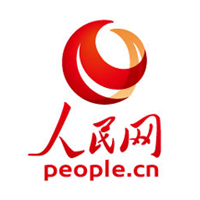Original title: "Go to the archaeological site to see" has gradually become a new trend of cultural tourism
In the archaeological exploration, the staff are carrying out the site reinforcement work; In addition to the exploration, the visiting team listened to the excavation results at the pace of the interpreter. Such excavation and display of scenes were performed almost every day at the site of Kaifeng Bridge and Bianhe River in Henan Province.
In the past, considering the safety of cultural relics and other factors, the archaeological sites under excavation were mostly mysterious and "strictly forbidden", and rarely opened to the outside world. In recent years, cultural relics and archaeology continue to heat up, the public has paid more attention to the work of archaeological excavations, and many places in China are also gradually exploring to open the archaeological sites being excavated to the society.
As an archaeological site under excavation, Zhouqiao and Bianhe sites have been adhering to the principle of "excavation, protection, construction and display" for the past four years to share archaeological achievements with the public. In order to facilitate the public visit, the Henan Cultural Relics Department put up a shed on the archaeological site, built railings and plank roads around it, and also provided research classrooms to enhance the "beauty" of archaeological sites.
"In the past four years, about 50000 people have come here." Zhu Yanrong, a research teacher at the site, said that the public can enter the site after making a successful appointment. There are not only specially assigned persons to explain the archaeological process and results, but also to "watch" the excavation process of archaeologists and witness the excavation process of cultural relics, and also to experience the blind box "treasure hunting in soil layer" and "cultural relics restoration".
Archaeological sites under open excavation have been tried in many places in China. For example, archaeological sites such as the Shaanxi Emperor Qin Shihuang Mausoleum Museum, the site area of Liangzhu Ancient City in Hangzhou, Zhejiang Province, and Tomb No. 2 of Tushan Han Tomb in Xuzhou, Jiangsu Province have entered a new stage of "excavation, protection, research, display, and utilization at the same time".
During the May Day holiday this year, the Dahe Village Site, Shuanghuaishu Site and Qingtai Site in Zhengzhou, Henan Province held "Public Open Day of Archaeological Sites", with almost "seconds" of visitors. At the archaeological site, archaeologists not only explained the excavation results in person, but also provided archaeological coffee, stamp punch, archaeological tool experience, etc.
"I have a good sense of research experience at the archaeological site and can learn archaeological knowledge," said Zuo Jia, a parent of a student in Zhengzhou.
In March this year, the Wangzhuang Site in Yongcheng, Henan, which was just selected as one of the top ten newly discovered archaeological sites in 2023, also welcomed many batches of primary and secondary school students. Zhu Guanghua, the leader of the archaeological team at the site, believes that open archaeology can eliminate the mysterious speculation of the public on archaeological excavation and respond to public concerns.
Cao Cao Gaoling, located in Anyang, Henan Province, once caused controversy. Pan Weibin, a researcher of the Henan Provincial Institute of Cultural Relics and Archaeology, who presided over the archaeological excavation, suggested in an interview that the archaeological excavation work should be more open to the public, so that the public can participate in discussions and express their views. At the same time, archaeological researchers should strive to do a good job in archaeological research, and use more convincing scientific achievements to respond to various queries, which is itself a process of promoting science to overcome fallacies.
Wang Tao, deputy secretary-general of the Public Archaeology Professional Committee of the Chinese Archaeological Society and professor of the History School of Capital Normal University, said that by opening archaeological sites and carrying out "excavation and exhibition" and other ways, the public can understand the archaeological research process, increase scientific and cultural knowledge, and enhance cultural relics protection awareness, which can attract more people to participate in cultural heritage protection. (Reporter Han Zhangyun)
(Editor in charge: Wang Lianxiang, Li Nanhua)
Share to let more people see




































